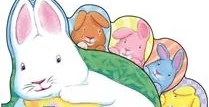We know it's been a warm fall in parts of the country, but we're deluding ourselves if we don't think that winter is coming. And while that's a harmless bit of denial often necessary for living in our climate, we don't want that delusion to keep going at the expense of holiday book sales. As we've done for the past two years (2016 and 2017), we've again put together some information that can help you reach the Canadian gift and book buyer.
When does holiday shopping begin?
As we found last year, holiday book buying can start as early as 10 weeks before Christmas! So there's no time to lose. The long climb to Christmas starts earliest for Juvenile/YA books at about 10 weeks before Christmas. Non-Fiction sales typically start climbing up around seven weeks prior, whereas Fiction purchases don't start until five weeks before.
According to Think with Google, Canadian Millennials and Gen Xers are more likely to be last-minute shoppers, while Boomers are more likely to be either early birds or shoppers who spread their holiday shopping throughout the season.
Canada Post claims in their Holiday Success Guide that, in 2017, 74% of merchants offered pre-Black Friday sales to start reaching customers early and in hopes of "capturing a larger share of holiday spend."
How did the 2017 holiday book-buying season compare with the 2016 season?
When we looked at print sales for the five weeks leading up to Christmas in 2016 and 2017, we found that the differences between the value and units sold in 2017 compared with the year before (among a consistent group of retailers reporting to SalesData) are not very dramatic. In 2017 unit sales were down only 2.4% against 2016 unit sales. And the value sold in 2017 was only down 1.2% compared with the value sold in 2016.
Where do you find book buyers?
In 2017, 52% of book buyers purchased their books online (which includes ebook/audio downloads and mobile app purchases), while 48% made their purchases through physical channels.1
With that in mind, booksellers would do well to target book buyers where they hang out online. In 2017, 62% of book buyers were on Facebook, 44% used YouTube, 25% were on LinkedIn, 24% on Instagram, 23% on Pinterest, and 10% on Goodreads.2
You can learn more about using many of these platforms and the demographics of book buyers on social media through our #AmReading series. We've released two so far: one examining Instagram and the other, Facebook. We'll be releasing the subsequent reports throughout the fall.
As for holiday shoppers in the US, according to Think with Google, "nearly two-thirds of shoppers say online video has given them ideas and inspiration for their purchase." US shoppers also made half of all their online purchases on smartphones, so make sure your site is mobile-friendly.
Holiday buyers are gift buyers
In 2017, gifts accounted for 19% of all book purchases.3 But in the fourth quarter of 2017, the quarter that contains Christmas, that percentage climbs to 29%.4 So whether the holiday shopper is shopping in person or online, they're going to be asking a lot of questions like, "What's a good book for a person who likes x?" Or they're going to be searching "gifts for people who are into x." Make sure you've got suggestions.
Retailers, how do you know which books to stock?
Good question. In the five weeks leading up to Christmas in 2017, Juvenile/YA titles made up 41% of print books sold, followed by Non-Fiction titles at 35% and Fiction at 22%.
We've also written a series of posts on holiday perennial bestsellers (the books that sell well year over year in the lead up to Christmas), broken out by Fiction, Non-Fiction, Juvenile, and Young Adult BISACs. These books, while not necessarily what you’d think of when you think of the holidays, are tried and true sellers.
Another useful tool for retailers is SalesData. (Not a subscriber? Retailers can sign up for free here.) We've compiled a guide to three reports you can run to see:
which books you may be missing out on;
books that are selling really well that you're going to want to keep an eye on; and
inventory gaps at your store(s).
Now that you're armed with some extra information about the season, the buyers, and the book gifters, go forth and sell, sell, sell!
1 BookNet Canada's consumer survey, 2017.
2 BookNet Canada's consumer survey, 2017.
3 BookNet Canada's consumer survey, 2017.
4 BookNet Canada's consumer survey, 2017.


















The backlist titles selling most consistently in the Canadian book market.